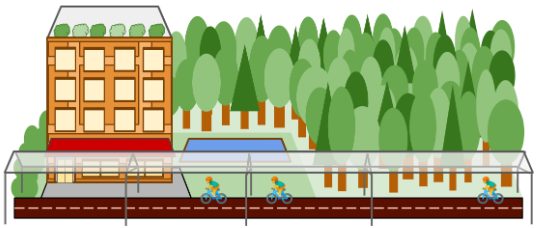Why Housing is Ripe for a Tesla-Like Disruption
Tesla, Inc. CEO Elon Musk has disrupted the auto, aerospace and energy industries with a powerful technique from the software industry (where he launched his first companies). This technique, which I call factored design, can massively improve the performance of nearly any industry, especially housing.
This is good news for two reasons:
- Residential real estate is a huge entrepreneurial opportunity. It's a much bigger industry than the internet, and there's a growing discontent with its existing products, from choking city centers to isolated suburbs.
- A factored design tends to be much greener by dint of its efficiency. This is how higher profit margins can work hand in hand with a smaller ecological footprint. A growing number of projects have even increased land values and incomes by healing past environmental harms.
In this article, you'll learn how factored design works, explore its power with three case studies, then discover, through a worked example, how it can improve the performance of a small housing development.
How factoring works
You first encountered factoring in grade school math.
It may have seemed like a strange game where you break numbers apart and put them back together again.
Something like:
AB+AC = A(B+C).
In this expression, A is the common factor of AB and AC, so A can be factored out.
Your teacher may not have mentioned how useful this can be in the real world.
For example, if you wrote a software program, AB + AC would run much slower than A(B+C) because the first expression has twice as many multiplications.
But factoring is not just for software. Anything you can count, you can factor. Including bricks and mortar.
That's right, you can factor reality!
How to Factor a Design
Here's the recipe:
- Look for patterns
- Group repeated elements
- Profit!
Step 1: Look for Patterns
Patterns are elements that repeat.
In math, elements can be numbers or letters. You'll find them in expressions like this:
ay + by + cy + dy + ey
or this:
y5+ 5y4 + 10y3 +10 y2 +5 y + 1
or this:
Compute the running sum aby + cdy + efy for 100 values of y and constants a, b, c, d, e, f.
If you love puzzles, look at each expression and figure out which elements repeat and how many multiplications you can save by factoring.
Otherwise don't worry, I'll spell it out below.
Step 2: Group Repeated Elements
Did you notice how, in each case, it's just the y that repeats? That's the common factor in each term of the expression.
Once you've found the common factor, you can simplify the expression so that nothing repeats. That first expression now reads:
(a+b+c+d+e)y
The second reads:
(y+1)5
And for the final example, typical of a loop of computer code, we precompute g = (ab+cd+ef) before the loop, then:
Sum the 100 values of y and multiply by constant g.
Now all the expressions are factored, meaning nothing repeats.
What's next? Oh. Yeah…
Step 3: Profit!
Let's start with the obvious application: software.
Computers without specialized hardware can take a lot more time to process multiplications and exponents than they do to simply add two numbers. So in the examples above, software running the factored expressions above would save:
- 4 multiplications in the first example, making it about 5 times faster.
- 7 multiplications or exponents in the second example, making it about 8 times faster.
- 597 multiplications in the third example, making it about 200 times faster (because 600 / 3 = 200).
All of which brings us to...
Case Study #1: a Million Stars in Your Pocket
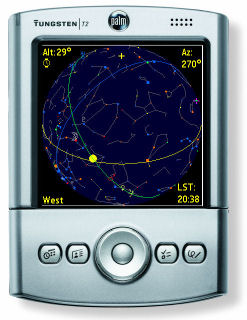
Long ago, I wrote an astronomy app for Palm Pilot, that distant ancestor of the modern smartphone. My app, called 2sky, animated the sky in real time using three loops:
- one to retrieve star positions from a database.
- another that figured out where the earth, Moon, other planets, comets and asteroids were in their orbits.
- and another that figured out what you could see from where you stood on the earth.
When I took off-the shelf equations and factored them in each loop, its performance gains multiplied together with the other loops to give me this massive speedup, like 5x8x200 = 8,000x. (I also used subtler forms of factoring, for example by pre-sorting my databases by geometric position and brightness).
My factored design made the difference between award-winning software with thousands of ecstatic customers and something far too slow and clunky to sell.
Now here's the kicker: I wrote 2sky for devices 1,000x slower than even the dumbest of today's smartphones, with 1,000x less storage.
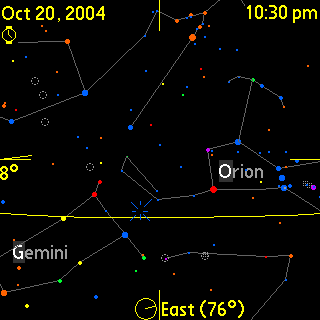
Yet it still ran as smooth as today's smartphone astronomy apps. Some of them may even still use bits of my code.
You're probably thinking something like "yeah, but that's software. Here in the real world…"
Actually, in the real world, factoring works exactly the same. Opportunities to factor abound, and it can blow the lid off your product's performance.
To wit:
Case Study #2: SpaceX
Rocket technology took a giant leap forward when SpaceX started 3D printing major components of their engines. Now it's routine.
Before they did this, rocket motors were made of many metal parts bolted or welded together in hundreds of places. Each bolt or weld was an opportunity for the rocket to break under heavy load, so they were reinforced, adding a lot of weight. Engines could have part counts in the hundreds to thousands.
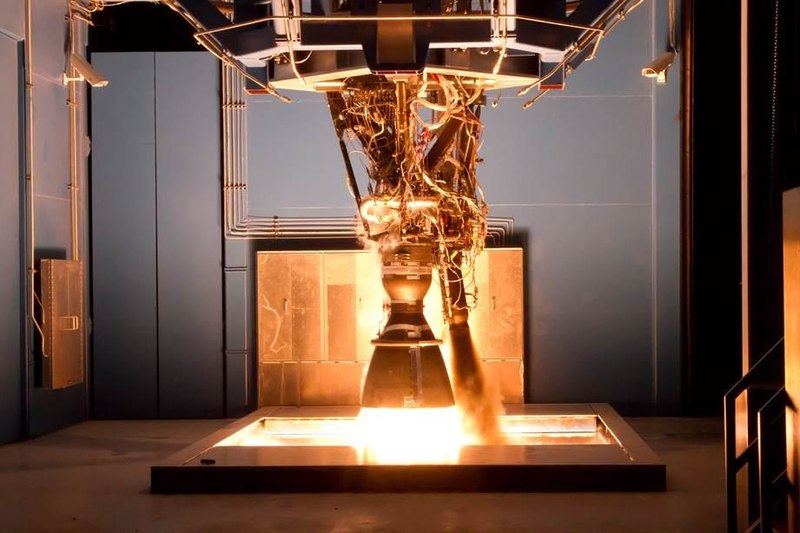
The 3D printed Merlin 1D engine cut the part count way down, resulting in a thrust to weight ratio of 181. That's astonishing because, for decades, the best ratio rockets could manage was about 77.
What SpaceX did was like entering the 100-meter dash, where the world record has stood above 9.58 seconds for decades, and running it in 4.08 seconds.
By the way, this design also dramatically reduces opportunities for manufacturing defects and the subsequent need for inspections. All of which paves the way toward lower cost and reusability. Reusable rockets factor out the expensive equipment that is usually discarded with each launch, which could ultimately reduce the cost of space access by two orders of magnitude.
Case Study #3: Tesla, Inc.
An internal combustion engine has 2,000 moving parts, while Tesla's electric motor has 20.
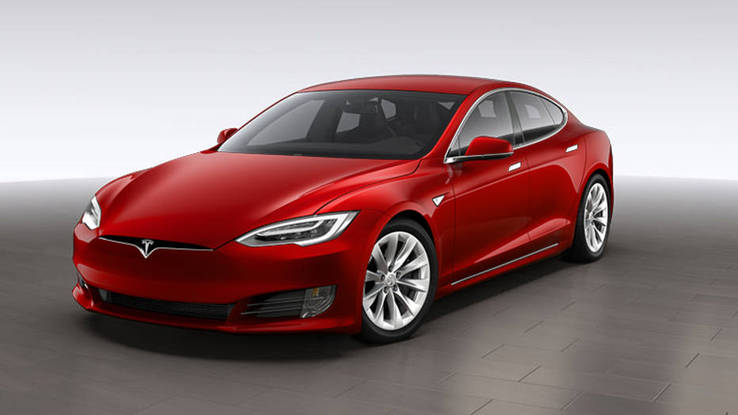
By having 100x fewer moving parts, Tesla can affordably design, test, redesign and build cars that are much safer, faster, more reliable and more efficient than anything that came before.
Notice how, in product design, the numerical advantage of factoring improves quality in many areas at once.
Also notice how a Tesla doesn't look too different from cars already on the road.
Factoring can give a product incredible advantages without having to look weird.
From the business end, this can be a problem. Without additional attention to decoration, heavily factored designs can look so normal that their humble appearance can mask their revolutionary performance.
Ready for the big payoff?
Let's factor some real estate!
Here's a neighborhood:

Let's run it through the 3-step factored design process.
Step 1: Which elements repeat?
Elements in this case means physical structures. Here's my count of repeated elements:
- 15 houses, each with their own exterior roof and walls.
- 4 streets, 26 feet wide.
- 20 Cars and parking for them.
- 15 Small swimming pools.
- Assorted Trees and plantings, including perhaps a few small vegetable gardens.
Step 2: Combine redundant elements
Here's what I came up with for a factored design:
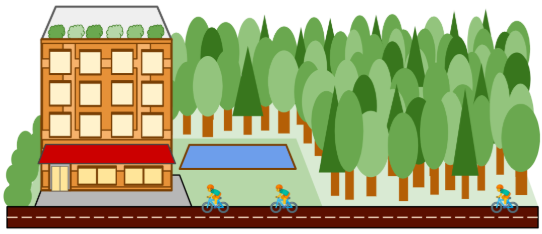
- One apartment building with 24 apartments, a gym, and a cafe.
- One bike path.
- One large swimming pool.
- One large, wooded park, planted with edibles such as fruit trees.
- A rooftop greenhouse to grow fresh produce year-round for the cafe.
The rooftop greenhouse improves the building's climate control and factors the many small neighborhood food gardens, opening up new opportunities for the cafe.
Let's talk about that ground-floor cafe. Mixing residential/commercial space like this is something you'll see in New Urbanism, which designs neighborhoods to meet most of your needs within walking distance.
But New Urbanism still bends over backward to accommodate the car and the detached home. That means dedicating amounts of space to parking and roadways that seem absurd next to a factored design.
With efficient bike access, it's possible to fill the transportation gaps economically with mass transit and car shares off-site, but nearby. This would give people access to the transportation they need, when they need it.
Of course, a bike path would need to admit trucks at selected times of the month for maintenance and moving people in/out.
Notice also that I didn't factor out the trees. I actually increased their number on a smaller footprint.
But I would still follow the core factoring strategy of reducing repetition.
This is a sharp departure from many suburbs, which landscape every yard with the same obnoxious fast-growing trees. A few decades later, silver maples, for example, start dropping huge branches on driveways and roofs.
Instead, I would plant as diverse a forest as possible, with plentiful native species. I would select some of these to fix nitrogen and provide leaf mulch to the fruit trees planted among them.
Step 3: Count your money!
Let's tally the overall value created for the builder and residents.
Better Amenities
First, the obvious. The factored property has:
- A resort-quality swimming pool big enough to swim laps, not just splash around.
- An on-site gym much better equipped than most garage gyms.
- A ground floor cafe where you can hang out with your neighbors and get meals without having to shop and cook.
- A wooded park large enough for lots of people to play, exercise and relax. Plantings of edible fruit, berries and greens encourage people to get outside and explore throughout the Spring, Summer and Fall.
- The rooftop greenhouse supplies the cafe with fresh-picked produce throughout the year.
- Bigger windows with better views. These also brighten the interiors.
- Much less noise and pollution from cars and parking. No annoying car alarms, no revving engines, no exhaust fumes.
Better Economics
- 4x less land to buy per resident.
- Construction costs 24% less because the apartments share various combinations of walls, roofs and floors. Going multi-story does require stronger materials, and fire safety devices such as sprinklers adds some costs. But these are offset by the much shorter utility runs.
- Insulation costs 88% less because of the lower surface area per resident. Heating and cooling is 290% more efficient due to the lower surface area to volume ratio. Combining these factors with the moderating effect of the rooftop greenhouse can easily cut both the construction and energy costs of climate control by 80-90% per resident.
- Roads cost 8-12x less because there are 4x fewer streets and the 11-foot bike lane can provide twice the level of service as a 26-foot-wide street plus sidewalks. (I would invest some of these savings in a roof over the bike paths to make commuting safe and comfortable year-round.)
- Transportation costs 20x less for residents than owning a car. Plus, with a bike, you can get your license at age six!
- Less hard surface means much less concrete to pour for storm drains.
- The gym and greenhouse-to-table cafe are potential profit centers, providing the community with income and on-site jobs.
- The wooded park satisfies a deep daily need for wilderness that is proven to boost property values.
- The higher density makes nearby bus, trolly or other transit systems economically viable.
The total cost to build, own or rent will vary by region depending on the prices of land and materials. Builders could save 50% or more on overall construction costs. And residents could save so much on transportation, tax, insurance and utilities that their total monthly expenses could fall by 50%, even if they pay a lot more per square foot to be closer to an urban center.
Bottom line: factored design allows builders to substantially increase their profit margins and residents to substantially cut their costs.
Safer and Healthier:
- Children don't have to cross busy streets to visit neighbors in the building.
- Far more opportunities for face-to-face interaction, so no one remains a stranger for long (good design, such as clustering small groups of apartments around lounges, libraries or other common areas, maximizes this opportunity to build social capital).
- The green space can be landscaped to buffer floods and droughts, and planted with fire-resistant species. This is easier to implement and manage on a single property than to enforce over time among many separate houses and owners.
- Far less air and water pollution from cars and power plants. Car exhaust alone killed 58,000 people in the United States in 2005. That's more than died in car accidents. Oh, and I've factored out most of those, too.
- Bike commuting provides great health benefits (see below).
- Because it's more compact, we can build the factored property closer to urban centers, shrinking commute times. This can drastically increase how much family time the residents enjoy.
Pay close attention to that last item. Most Americans think of suburbs as safer and healthier than apartments, especially for children. But in his book Happy City, Charles Montgomery has chronicled the exact opposite. Bedroom communities with long commutes can become places with no family time at all. Predictably, children end up neglected and alienated: a perfect recipe for gangs, drugs and teen pregnancy.
How factoring reduces stress
Now, I realize that many people will think of apartments as a big step down from the suburbs. They worry about noise and crowding.
My numbers above assume that the apartments provide the same area per resident as the detached homes, and the common spaces are large. So they won't feel crowded.
I've lived in many apartments over the years, and noise depends on build quality and location.
Building with no immediate provision for cars eliminates most of the street noise, so let's assume good acoustic design and follow a suburbanite's move to a factored design property.
He may grumble about it at first.
But a year later, he has a jolting visit with his doctor.
She says, "what happened to you?"
"What do you mean?"
"OK, here's your chart. Since last year, you lost 15 pounds. And your blood work and vital signs look a lot better. What changed?"
Oh, just a few things. Now he:
- Commutes by bicycle, which builds exercise into his day.
- Has time for daily walks with his kids in the forest. More exercise!
- Snacks on fresh-picked fruit rather than chips.
- Dines with family and neighbors in a garden-fresh cafe.
- Worries a lot less about crime and family drama.
Yeah, but will people buy it?
I've obviously designed this property to be really "green."
It uses a small fraction of the material and energy required to build and maintain a suburb. It also offers vastly more opportunities to interact with people as well as gardens and wildlife.
Face it, that sounds pretty hippy.
Problem is, in America, "hippy" sounds down-market. Probably because the counterculture and the back-to-the-land movement were all about renouncing materialism.
Well, today green is gold
I discovered that first hand when my neighborhood's green reputation propped up my home's value during the housing crash. And I've confirmed it through additional research and travel, which I'll discuss here soon.

Bottom line
A housing project that uses factored design will cost the developer much less to build and command a higher price per square foot than traditional detached housing. For the buyer or tenant, it offers a much higher quality of life than a suburb, at substantially lower monthly cost.
And that's just the tip of the iceberg. As part of a larger development, this project would present many additional opportunities to factor the design of energy, food, retail, transportation, entertainment and numerous other systems. Each factor would expand a developer's ability to offer better living experiences at higher profit margins with less harm to the Earth.
I'll have a lot more to say about these larger opportunities soon. Since you're still reading, let's stay in touch so you don't miss out.
